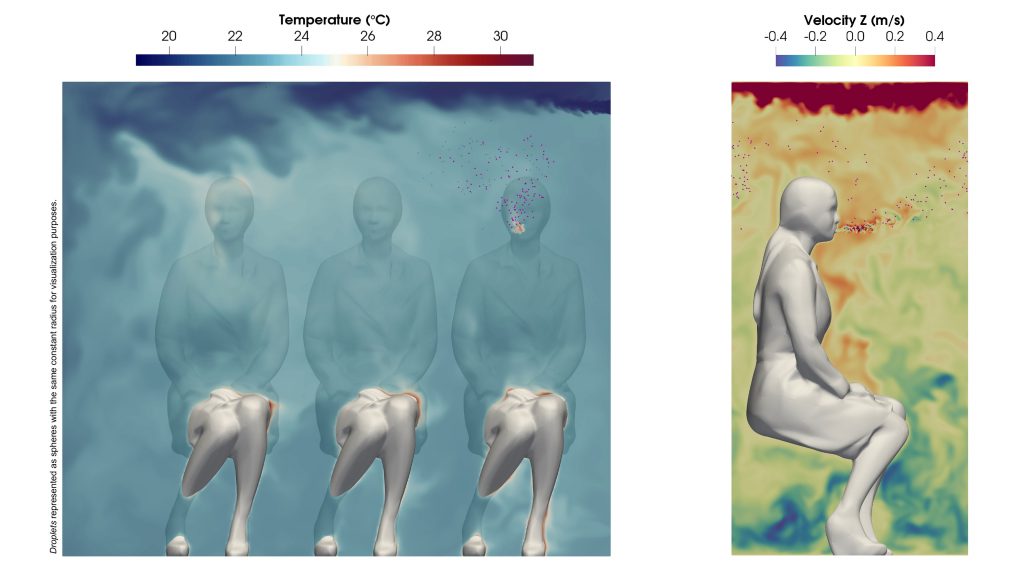From the Journal: Physics of Fluids
WASHINGTON, December 21, 2021 — The COVID-19 pandemic has revealed the urgency of understanding how public transportation ventilation systems transmit viruses and how exhaled droplets evolve in ventilated spaces. Researchers have wondered if those ventilation systems can be improved to mitigate virus transmission.

In Physics of Fluids, by AIP Publishing, researchers at IBM Research Europe developed a model with an unprecedented level of detail and focused on conditions that are more characteristic of asymptomatic transmission. The multiphysics model involved air and droplet dynamics, heat transfer, evaporation, humidity, and effects of ventilation systems.
“By visualizing the droplets and the flow, you realize the number of physical phenomena taking place around us that go unnoticed, such as the complex interactions between natural body plumes, exhalation, and ventilation,” said author Carlos Peña-Monferrer. “When it comes to preventing risk of infection, this is precisely what makes it difficult to contain.”
The researchers analyzed what happens when speech droplets are exhaled from a row of sitting passengers in a ventilated space, like those in public transportation vehicles. In some of these systems, air is injected at the top and extracted at the bottom through the vents near the window seats.
This generates an internal recirculation to enhance thermal comfort and remove contaminants, but the researchers were interested in whether certain seat positions affect the circulation adversely.
The team found droplets from the window seat rose more and invaded the space of other passengers to a lesser extent shortly after exhalation. Moreover, droplets released from the middle seat contaminated the aisle passengers more, indicating the downward flow of personal ventilation in aisle seats could move droplets down and increase the risk of infection.
Droplets released from the aisle were dragged down by the ventilation system immediately.
The researchers modeled various scenarios in close detail, such as a situation where passengers in different seats were pronouncing a vowel for a few seconds. By creating detailed representation of the flow field and tracking every single droplet, they were able to reconstruct their ventilation paths.
In the future, the team will reproduce conditions that more closely represent the diverse human activity on public transport vehicles to help inform actions, design, and operation of future ventilation systems for safer environments.
“These high-resolution simulations were focused on public transportation vehicles, but they could be extended to commercial or residential buildings, health care facilities, offices, or schools,” said Peña-Monferrer.
###
For more information:
Larry Frum
media@aip.org
301-209-3090
Article Title
Authors
Carlos Peña-Monferrer, Samuel Antao, and Robert Manson-Sawko
Author Affiliations
IBM Research Europe
